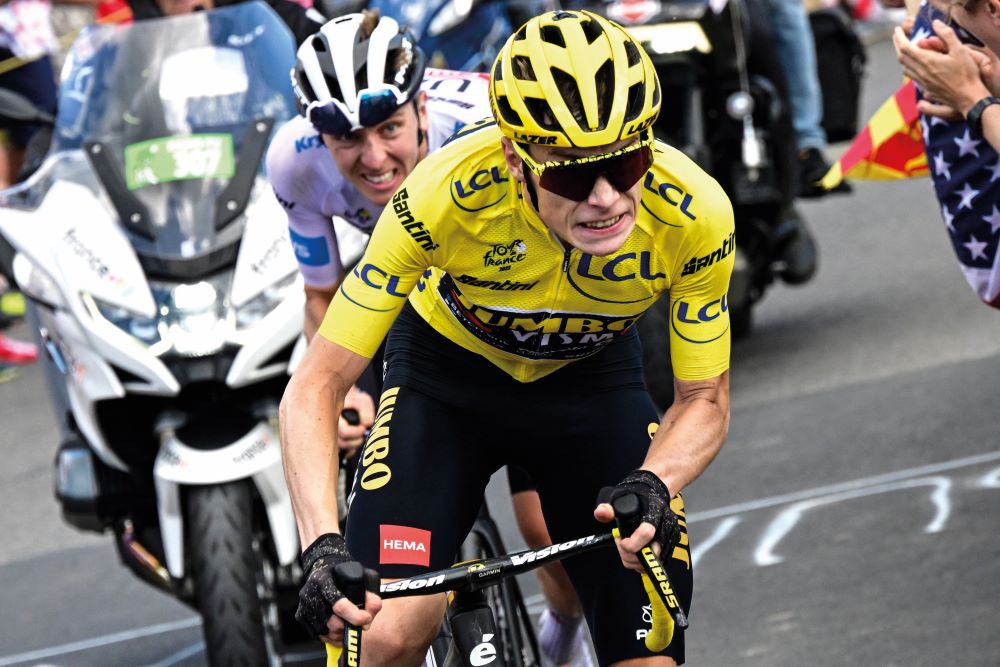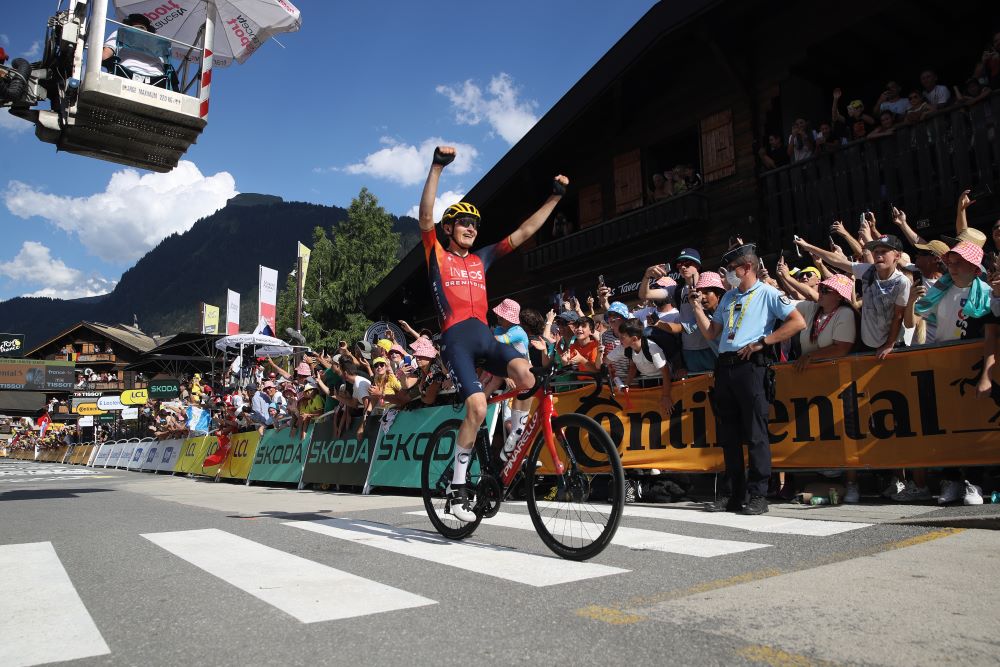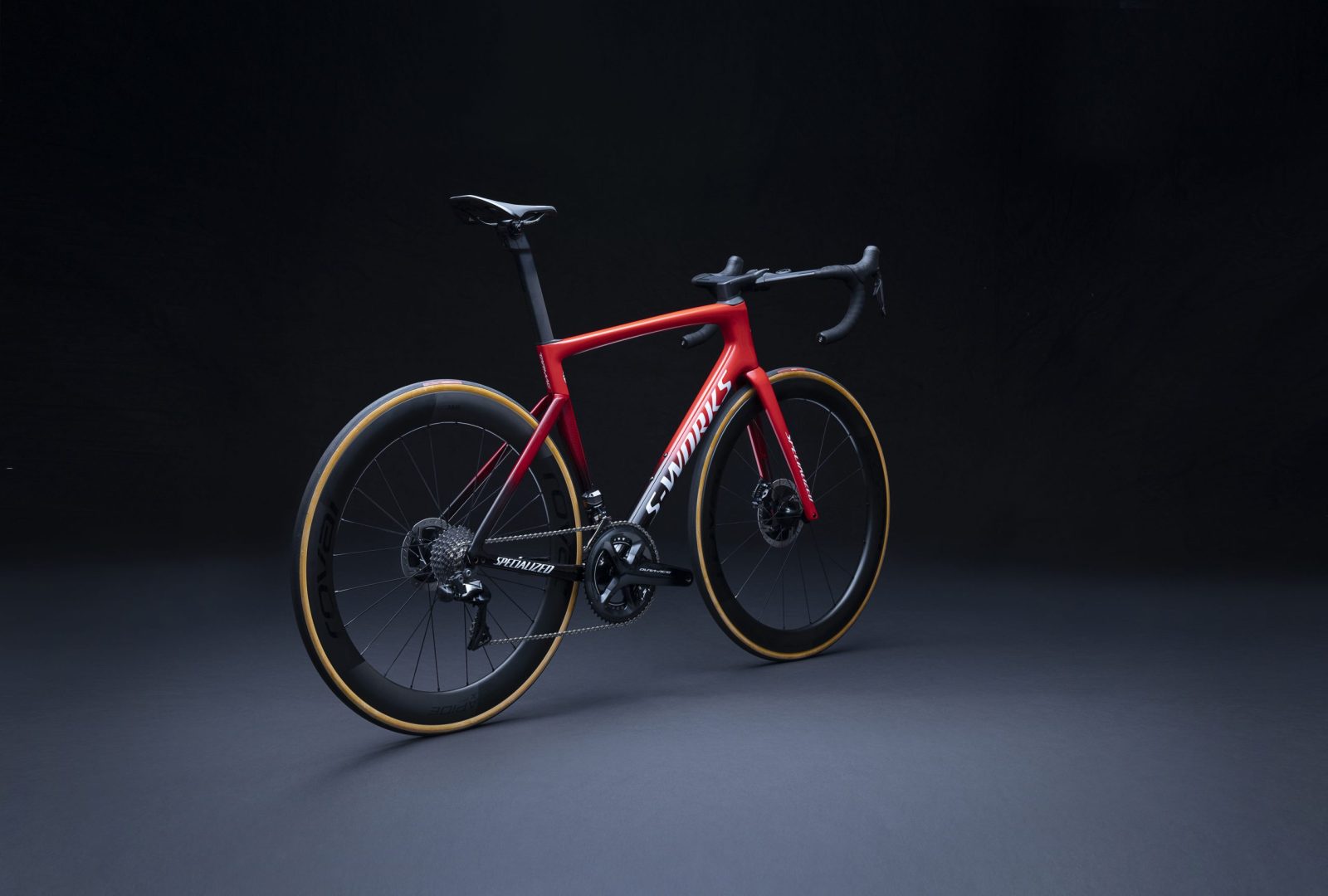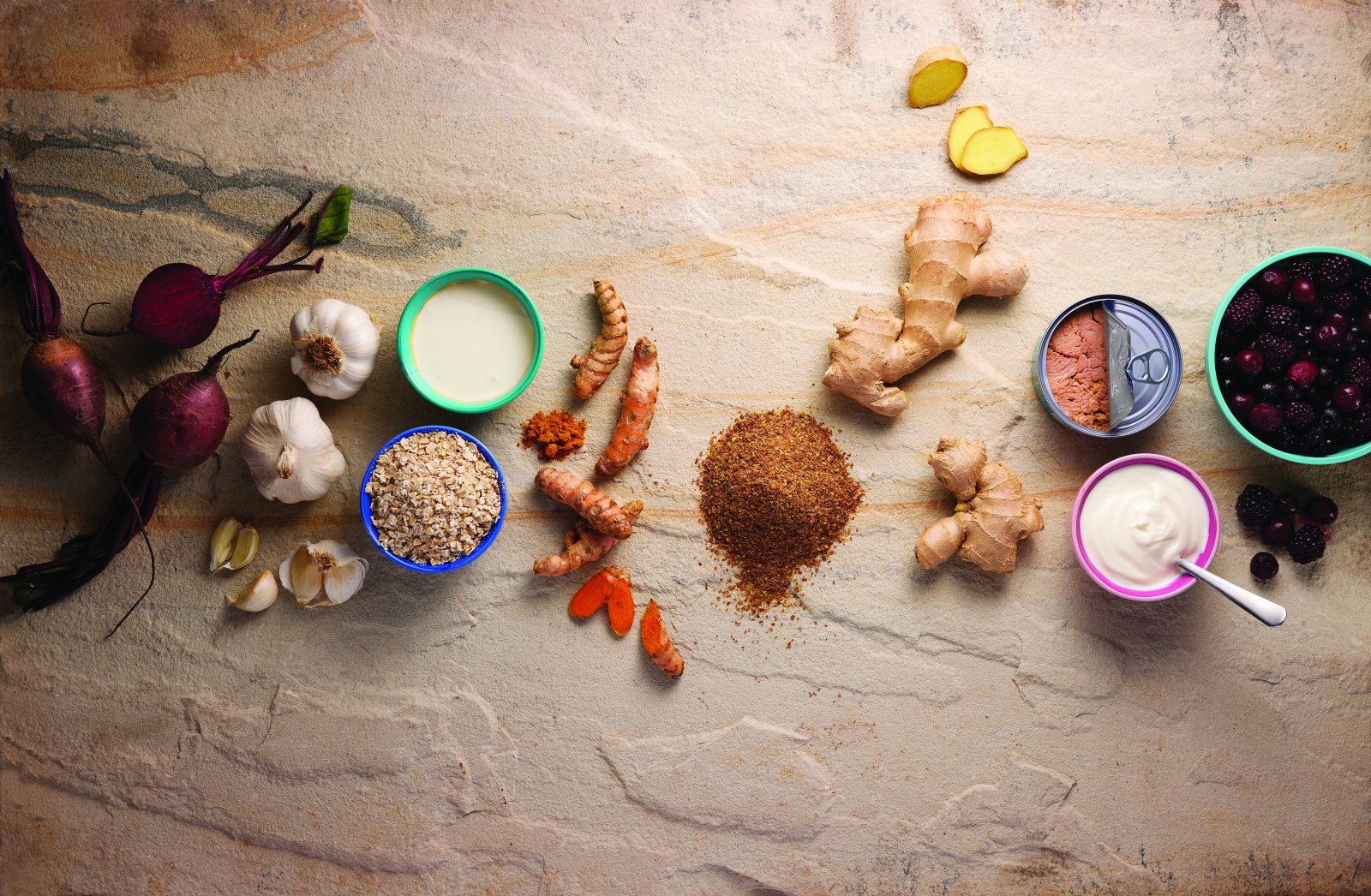We know that professional cyclists are stronger and faster
than us amateurs, but by how much? Cyclist heads to the Étape du Tour to ride the hills and crunch the data

Words JAMIE WILKINS
Photography CHRIS STORRAR
How much better are pro riders than the rest of us? It’s an age-old question, and there’s one event that offers the opportunity to lay out the harsh reality.
Each year, the Étape du Tour lets amateurs ride a complete mountain stage of the Tour de France a few days before the professionals, providing a unique chance to compare times and power data to assess the gulf between the best and the rest.
Earlier this year, Cyclist sent me to the Alps to ride the 2023 event – 157km (145km of it officially timed) from Annemasse to Morzine with 4,100m of climbing – and turn myself inside out in the name of science before submitting to the ritual humiliation of comparison to the world’s top riders.
Helping me to analyse the numbers and establish some lessons is coach Chris McNamara from TrainSharp Cycle Coaching.
McNamara trains riders at every level, up to and including the WorldTour, and has also coached me for years, so he’s ideally placed to put all the data in context.
As well as comparing myself to a couple of pros, we’ll also look at a couple of other amateurs to cover as broad a range of abilities as possible.
I love events like the Étape and was motivated to achieve the best possible finishing time and position.
I trained hard, prepared meticulously and had a great ride on the day. By the end, I was absolutely shattered, and my efforts got me 104th place out of 11,791 finishers, inside the top 1%, which I’m very happy with.
So how does that stack up against the pros?

Setting the groundwork
While the concept of the Étape is that amateurs and pros ride the same route, on this one the pros had a different roll-out from Annemasse and only met the Étape route after 6km.
Then they suffered a huge pile-up moments later that forced the race to be briefly suspended.
Added to that, the Étape also had a different finish point to the Tour stage, so to unpick all this we gathered data for riders’ complete rides and also for the 132km where the two routes overlapped exactly after the pro race had resumed.
The winner of that Tour stage – Stage 14 – was Carlos Rodríguez of Ineos Grenadiers, who covered the 132km section in 3h 41min 13sec at 35.9kmh, versus the 4h 48min 25sec it took me at 26.7kmh.
That gives a basic insight into the differences between us, but a more revealing question would be – how are the pros better?

McNamara from TrainSharp explains, ‘In the simplest terms, the main differences between pros and amateurs are the size of the engine and their fatigue resistance.
That is, they can produce a lot more power, especially in terms of watts per kilo, and also keep putting out close to their best numbers through the third and fourth hour and onto the final climb, where the race is usually decided.’
To really dig into the differences, we’re looking at the ride of Emanuel Buchmann, 13th on the stage and the highest-placed rider with publicly available power data.
For our respective full rides, he averaged 247W to my 239W. I’m 12kg heavier, so it’s more informative to look at his 4.2W/kg for four hours versus my 3.4W/ kg for five and a half.
That also happens to be the exact power I dragged out of myself on the final climb, the Joux Plane, while he produced 314W (5.3W/kg).
There’s that fatigue resistance coming into play, allowing him to ride much harder at the end.

The spread and the overlap
The term ‘amateur’ covers a broad spectrum of abilities, and cyclists have different goals – some are after a personal best, others just want to enjoy the ride.
This is demonstrated in the 8h 47min 27sec gap between first and last place at the Étape.
Put another way, it took the last rider nearly three times as long to complete the course as the first, but there are numerous reasons for why this might be the case – maybe they experienced mechanical difficulties – so it makes sense to also look at the distribution of finish times.
The Étape was won by Artus Jaladeau, a 23-year-old elite who turns pro in 2024 with the Continental team CIC U Nantes Atlantique, in an official time of 4h 31min 28sec.
With justa handful of riders of his level competing, the times rose quickly and 50th place was over 30 minutes down (I was a further 13 minutes back).
From there, it’s around 35 minutes to 500th, then 25 to 1,000th, and then around 25-30 minutes for every 1,000 riders right back to the 11,000th to cross the line.
The last riders to finish are much more spread out, with two and a half hours covering the last 700.

That distribution puts the estimated mean and modal times both close to the median time (discarding the much slower final two finishers to avoid distortion) of 8h 36min 10sec.
For the 132km overlapping section, the average amateur time is around 8h 15min, more than twice as long as the average pro time of around 4h 03min.
Interestingly, the figures show that the winner of the Étape, Jaladeau, covered the 132km section four and half minutes faster than another pro with available data, Matej Mohorič of Bahrain Victorious.
Having failed to get in the break after a couple of early efforts, Mohorič plainly decided to save himself for another day and finished the stage second-tolast, 38 minutes down on the winner, Rodríguez.
Jaladeau averaged the exact same power as Mohorič while weighing 7kg less, and his average heart rate for that section was a furious 174bpm, versus 143bpm for Mohorič.
McNamara puts it in perspective: ‘Jaladeau is young, clearly talented, and we have to factor in that he was probably in the wind for more of his ride, but from the numbers here, and his 5.97W/kg FTP, it doesn’t look like he’d be able to simply walk into the WorldTour peloton and cut it.
There’s a small overlap to the tail of the pro field who are just getting through the day.
The WorldTour guys are a different breed, many levels higher than this. It will be interesting to see how he progresses.’

Amateur hour
Let’s look more closely at the performance of other amateurs in the Étape. For my part, I was aiming for the highest possible finishing position.
I worked hard to move up to near the front early on, rode well during the middle part, and then fell to bits on the final climb of the Joux Plane, where I started cramping badly.
As it happens, I only lost a handful of places during that climb because everyone around me was in pretty much the same state.
McNamara dissected my data: ‘If you want to be up there, then you have to stay with the faster groups, so you do have to front-load the ride quite significantly. In that respect, for your goal, you rode it the right way.
When you got to the final climb, your legs were what they were, but you were near the front throughout the day Performance test / Tech and placed well.
Also, your Intensity Factor was higher than the winner, so there’s no doubt that you gave it everything.’ After the event, I found two other riders who represented alternative strategies.
Guy Furniss finished in 7h 14min 31sec for 2,887th place, while Mike Shelton finished in 9h 32min 25sec for 8,483rd place having, notably, combined a very casual objective with a well-considered plan.
‘My goal was just to finish,’ Shelton tells me.
‘I worked out the pacing based on about 70% of FTP on the climbs, which gave me 160- 170W.
It was quite a cautious plan and I thought afterwards that I could probably have given a bit more effort on the climbs, but it was a brilliant day on the bike and I finished in the time I expected.’
Furniss describes a similar plan, although his data shows a harder overall effort.
‘My main aim was just to enjoy it, whereas in the past I’ve gone for a time. I tried to ride within myself as I’d died up the Joux Plane on the Étape in 2016.
I really enjoyed it and I think my strategy paid off. Maybe I could have broken seven hours but equally I might have blown up on the final climb.’

Over to McNamara for the analysis: ‘GuyFurniss did a well-paced ride that was still front-loaded and showed some drop-off but didn’t collapse on the last climb.
He was in zone 3 [below threshold] for most of it and I’d usually advise using the top of zone 3 as a ceiling for an event like this.
That was a good ride and probably close to his best possible time. ‘Mike Shelton was clearly quite conservative and certainly could have got around the course faster.
His best power came on the last climb. This is a good example of the other mindset. Some people want the best possible position and time, but lots of riders are more focused on enjoying the day.
If you want to ride it to enjoy it, not suffer too badly, and get to the end feeling like you loved every minute, then Mike’s pacing makes a lot of sense.’
So, what’s the takeaway? The pros are vastly better than even very fit amateurs and the time gaps are enormous.
That’s hardly a surprise. More actionable is the pacing advice. For the vast majority of riders, an event like the Étape is best ridden in zone 2 – never going into the red.
But if you’re fit and aiming to place in the top, say, 10 per cent, you should treat the top of zone 3 as your limit until the final climb.
Aim to stay with the front groups for as long as possible, then hang on and be prepared to suffer.

The rider’s ride
Factor O2 VAM, $19,490,
factorbikes.com

The new O2 VAM was designed for exactlythis purpose – going as fast as possible over a mountainous route, whether in the hands of amateurs at the Étape or with professionals in Grand Tours.
It’s astonishingly good. Bad bits? Well, the saddle clamp is annoying, and… that’s it. At 6.2kg and on super-light, carbonspoked wheels, it climbs brilliantly.
But it’s also a rocket downhill, a bobsled in corners, a TGV express train on the flat and super-stiff in a sprint effort.
I fitted Favero’s light and accurate Assioma Duo power meter pedals to get the data I needed for this feature.
Jamie Wilkins is a freelance writer, professional sufferer and owner of Escape to the Pyrenees guesthouse (escapetothepyrenees.com)
How we did it
Travel, accommodation and race entry
Cyclist attended the Étape de Tour with travel company Sportive Breaks.
It has more than 25 years’ experience of organising cycling trips and boasts the biggest selection of European gran fondo events, including the Étape du Tour, Marmotte, UCI Gran Fondo World Championships and Mallorca 312, plus the five Monuments and many more.
Sportive Breaks provides transfers, bike transport, additional feed stops, mechanic support and more.
It will even collect your race pack. In short, it does everything possible to allow you to focus on the ride.
See sportivebreaks.com. Carlos Rodríguez of Ineos Grenadiers celebrates stage victory on the Joux Plane.
Cyclist is just happy that the Étape is over
Thanks
Thanks to Chris McNamara at TrainSharpfor his expert insight.
Thanks also to Favero for the excellent Assioma Duo power meter pedals, which provided data for my pacing and analysis.



